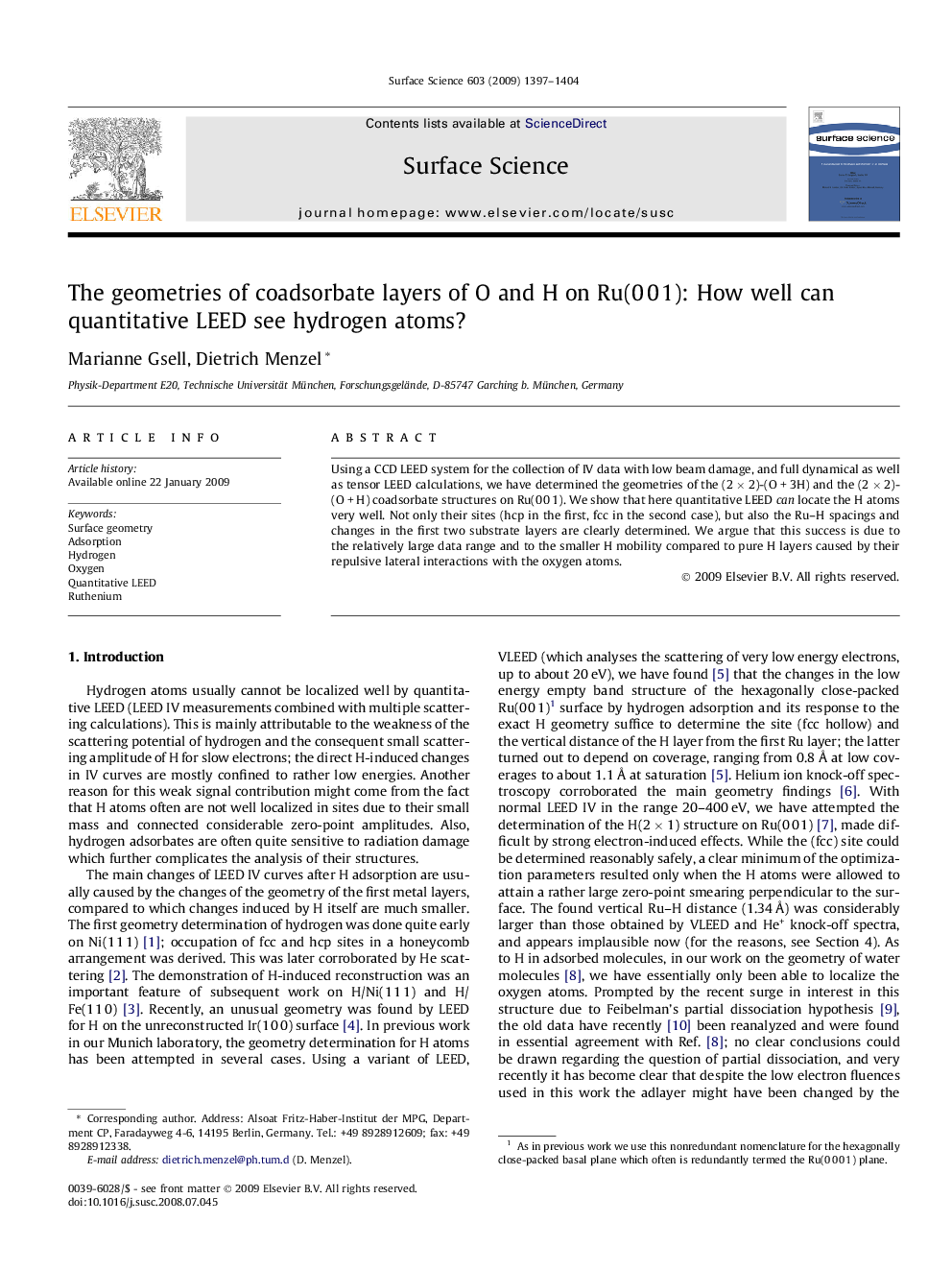| Article ID | Journal | Published Year | Pages | File Type |
|---|---|---|---|---|
| 5424194 | Surface Science | 2009 | 8 Pages |
Abstract
Using a CCD LEED system for the collection of IV data with low beam damage, and full dynamical as well as tensor LEED calculations, we have determined the geometries of the (2Â ÃÂ 2)-(OÂ +Â 3H) and the (2Â ÃÂ 2)-(OÂ +Â H) coadsorbate structures on Ru(0Â 0Â 1). We show that here quantitative LEED can locate the H atoms very well. Not only their sites (hcp in the first, fcc in the second case), but also the Ru-H spacings and changes in the first two substrate layers are clearly determined. We argue that this success is due to the relatively large data range and to the smaller H mobility compared to pure H layers caused by their repulsive lateral interactions with the oxygen atoms.
Related Topics
Physical Sciences and Engineering
Chemistry
Physical and Theoretical Chemistry
Authors
Marianne Gsell, Dietrich Menzel,
